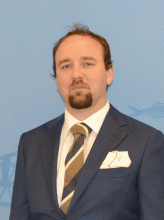In Estonia, the protection of industrial designs can be applied for on the grounds of the Industrial Designs Protection Act that entered into force on 11 January 1998. From 1 May 2004, legal acts concerning Community designs, including the Council Regulation 6/2002/EC of 12 December 2001 on legal protection of the Community Designs, are also valid in Estonia.
Pursuant to the Regulation, all industrial designs disclosed to public in the territory of the European Union automatically have a 3-year protection against copying as well as other existing possibilities for registration.
Estonia acceded to the Geneva Act of the Hague Agreement Concerning the International Registration of Industrial Designs on 23 December 2003. Common Regulations of the Geneva Act of the Hague Agreement Concerning the Deposit of Industrial Design entered into force on 1 April 2004. To protect an industrial design via the Hague system, an application in English or French should be filed with the International Bureau of WIPO in Geneva, designating the countries where protection is wanted.
In Estonia, industrial designs are registered by formal registration system. The Estonian Patent Office does not examine the industrial design as to its novelty, individual character, industrial applicability or the right of a person to file the application.
In 2020, the Patent Office received 40 industrial design registration applications, i.e. approximately the same amount as last year (37 applications). Everyone looking to register an industrial design were from Estonia, citizens from other countries did not submit any applications to the Estonian Patent Office. However, there is a significant rise in the number of applications filed by Estonian applicants with the EUIPO – 186 (130 in 2019). Applications filed like that will acquire protection in the whole territory of the European Union, including Estonia.
The number of applications for international registration of industrial designs filed under the Hague Agreement has also increased. In 2020, 36 applications were filed this way (21 in 2019). Unfortunately, however, the record for recent years, which was 88 applications in 2017, remained unattainable.
By the end of 2020, there were 19 national applications and 27 international applications pending. On 31 December 2020 there were in total 388 industrial designs in the Estonian register of industrial designs, and 1,152 international registrations of industrial designs had been granted legal protection in Estonia.
The extraordinary year also generated more interest than usual in registering industrial designs. In the first half of the year, applicants had a strong interest in protecting all kinds of personal protective equipment, in particular the external design of face masks. The greater interest of applicants in the registration of industrial designs was clearly evident and is reflected, in particular, in the large number of telephone calls and in the very positive feedback. Video-related consultations were also justified: by sharing their screen, the applicant can receive the same information as on spot in the Patent Office. More opportunities for more convenient consultations will certainly have a positive impact on the overall growth of awareness.
It is also noteworthy that the unexpected situation in the first half of the year meant a rather modest receipt of applications for registration of industrial designs, but when the new reality had become more habitual, the number of applications also increased dramatically. Of the 40 applications filed, 22 – more than half – were filed in the fourth quarter of the year. In addition, it is more reasonable for many applicants to file their industrial desing applications directly to the European Union Intellectual Property Office, both on the basis of a business strategy and economically, and an increase in the number of applications can be noticed in that area too.
Workshops on copyright and product design by Zoom have also been successful and problem-free. A significantly larger public can take part in the webinars than in the classroom seminars. As a negative, it may be pointed out that the format makes it more difficult to have discussions. However, it is good to know that, even if the overall situation normalises and workshops can again be organised in the new classroom of the Patent Office, there will always be the capacity and experience to organise video seminars as a backup.
The year 2021 may be welcomed rather optimistically. New forms of consultation and the possibilities for organising seminars have justified themselves, and there is an increase in people's interest in creating something in domestic conditions and protecting their rights. It is also clear that applicants addressing the Patent Office with a request for consultation have done a strong preliminary work in advance.

